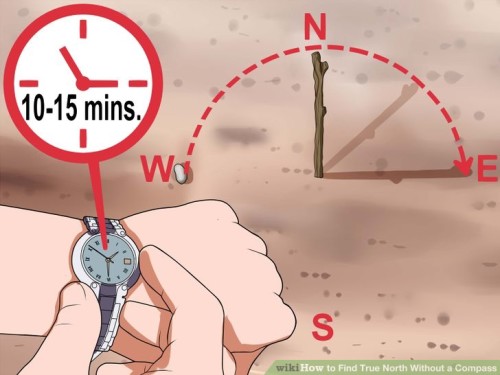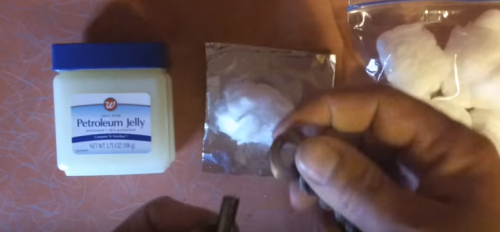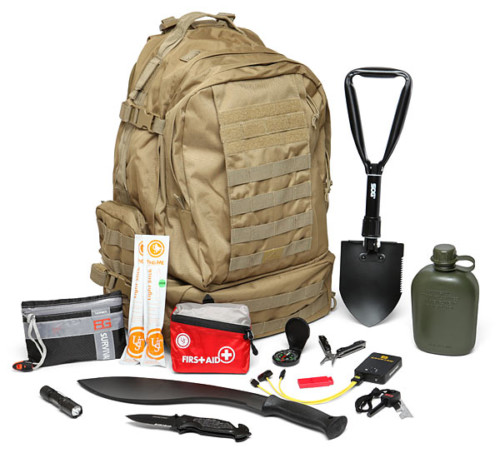Ascend a Wet or Icy Climbing Rope
If you’re into rappeling or knot tying for fun or practical survival, have a look at this Bachmann knot. You’re going to need it if you’re going to encounter climbing up with a wet rope.
The staff from ITsTactical shared some insights on this important to know Bachman knot. So here’s their excerpt:
On today’s Knot of the Week I’ll be covering the Bachmann Knot, a relative of the Prusik Knot that can be utilized as an autoblock or friction hitch. The biggest differences between the Bachman and the Prusik Knot lies in its usage of a carabiner. Additionally, unlike the omni-directional Prusik Knot, the Bachmann is uni-directional, meaning it can only be loaded from one direction and that’s down.
It’s advisable to use a locking carabiner for the Bachmann, considering you’ll be grabbing it to move the hitch. Just make sure it’s locked by screwing down so you don’t screw up. That’s my mnemonic device to remember to have the gate on the carabiner screw in a downward direction, so that if gravity decides to stick its nose in your business, it will carry it further into the closed position and not open it.
Using a carabiner with the Bachmann Knot allows your autoblock/friction hitch to move much easier, especially when wearing gloves. The carabiner gives you a dedicated spot to hold during ascending as well. The Bachmann is also beneficial around wet ropes and in icy conditions.
As you’ll see in the video below, make sure not to clip the Double Fisherman’s Knot section of your loop in when you’re connecting to your harness.
Video Transciption
Hey guys, welcome to the Knot of the week; today I want to show you the Bachmann knot, which is a great alternative to the Prusik loop, when you’re around wet or icy ropes.
[intro music]
Alright guys, so you’re going to need a couple of things to start off with to tie the Bachmann knot. One is a locking carabiner. I definitely prefer a locking carabiner on this, it’s actually used in the system to slide the Bachmann knot up and down the line. So what we have simulated here is your main climbing line, and I’ll show you kind of how this works on the line, as an auto block. So if you’re familiar with the Prusik, we’ve been over that before, so the Pcarabinerusik is an auto-blocker or a friction-hitch that allows you to move on the rope, whether you’re ascending the rope or using it as an auto-block, which is to arrest your fall in case of a slip while you’re rapelling; that’s what it’s for.
So the Bachmann knot is very similar to this, but the main difference between the Prusik and the Bachmann is that it’s Unidirectional– the Prusik loop is omni-directional, meaning that it provies friction whether you’re pulling up on the line, or down on the line. With the Bachmann knot, as you’ll see in a second, it’s unidirectional, and it only provides friction when it’s down-loaded.
So the first step is creating a Prusik loop, and if you’re not familiar with a Prusik loop, it’s simply just a double-fisherman’s knot that’s been tied to create a loop in the line. I typically like about a six-food length of line for me personally, that’s gonna vary depending on your size and things like that. So, the first step is to kind of off-set the barrel knot or the double-fisherman’s knot in the line. So, if you were going to take it just like this, meaning that one side was your barrel knot and one side is the loop, it’s not going to line up correctly because you’re gonna be attaching this into your climbing harness, so I like to off-set this a little bit, at least something like that, maybe about a foot or so. Then what you’re going to do is start by hooking the line, so you’ll form a ‘bite’, again, this is what the other side looks like, this is what this side looks like. You form a bite, then you hook this into the carabiner.
And the way we’re going to be using this, I’m going to position this so that I’m going to be down-loading or pulling down on the line in this direction, so. My standard schpiel on carabiners is screw down so you don’t screw up, so when you’re using a locking carabiner, the gravity –if it were to manipulate the actual locking mechanism– would carry it down, not up. Thus unlocking the carabiner. So hopefully that makes sense.
Again, we’re gonna have this open for now, we’re going to take that bite, slip it into the carabiner, just like so, and you’re going to align the carabiner parallel with the line that you’re tying onto, and you’re going to start wrapping. So that first wrap is now going to come inside the carabiner -I’ll move that out of the way in just a second here- just like this. So into the carabiner, around the carabiner for the first wrap. You’re gonna go fairly tight with this, but you don’t have to get crazy with it, because it is a friction hitch and it will tighten up for you. again, next line wraps around and through the carabiner, again around, through the carabiner, and we’ll do one more pass here, around, through the carabiner. So now I have a total of about four wraps in the line, and as you’re providing tension on the line, which will come from it being attached to your harness, again this end would be hooked into your harness here, so again that barrel knot with the double-fisherman’s knot is not in line with where that would be attached to your harness, that’s why I was mentioning the offset in the beginning.
So as the friction is being applied, this line won’t move this way, but if friction were being applied this way, it would turn into a mess, so therefore it’s only good when it’s being down-loaded, so to speak. Hopefully you understand what I mean by that term. So, always remember to lock your carabiner, that’s a very important step, and then you’ll be able to use this for a grip, so it can be great for ascending situations, especially when you’re wearing gloves, or -as I mentioned- with an icy or wet rope, so that you’re actually pulling up on the rope, you can actually manipulate this with the carabiner. So, again, if I’m ascending -meaning pushing that line up- and then getting tension from my harness, that’s really how you would start manipulating that Bachmann knot.
So hopefully you can see this is an interesting alternative to the Prusik, just remember that again, this is unidirectional, not omni-directional.
Stay tuned for a new knot of the week every Tuesday, and if you’re enjoying what we’re doing here on our knot of the week series, please consider joining the crew leader membership linked below in the description. Thanks for watching.
Source: ItsTactical Youtube



